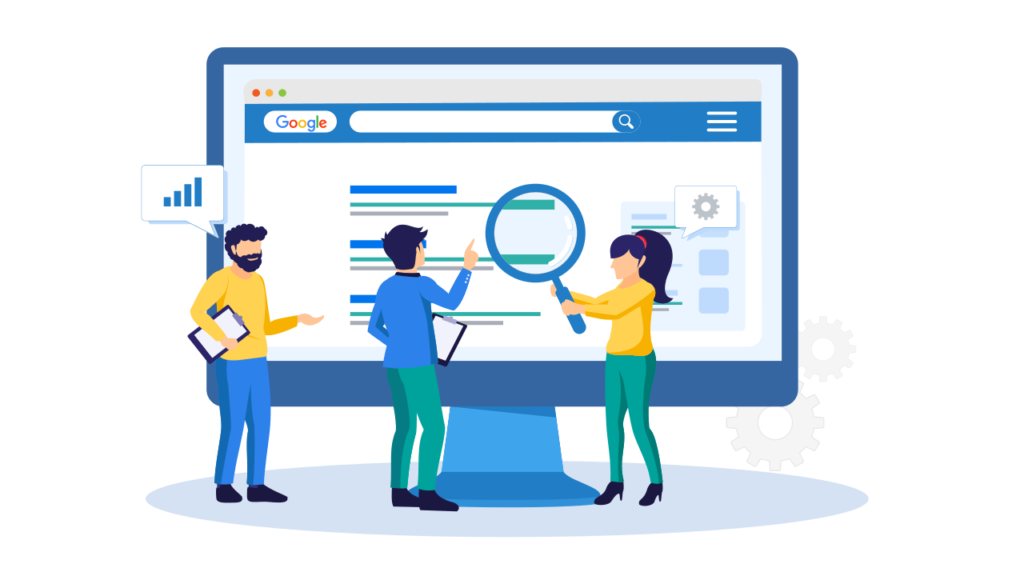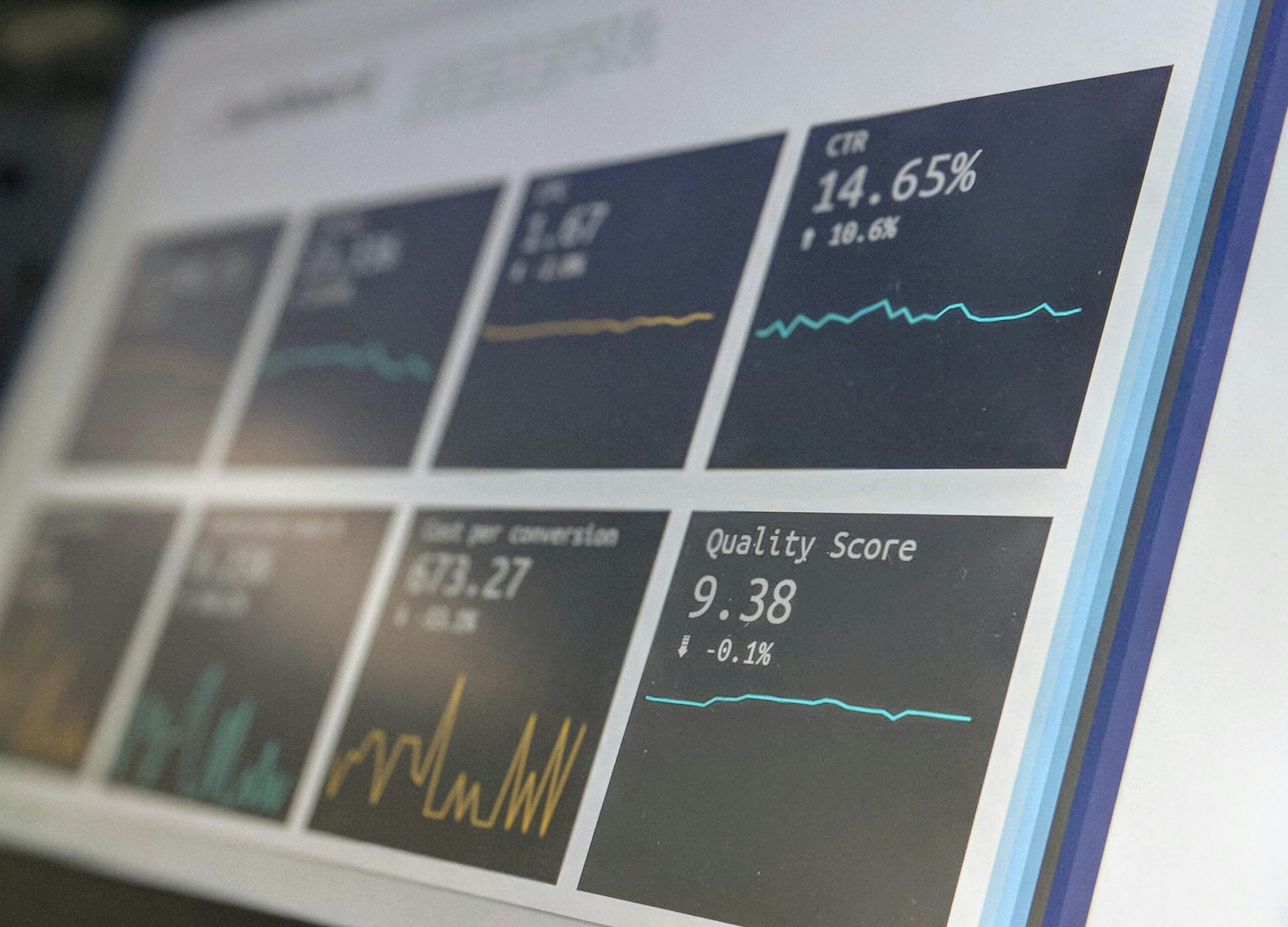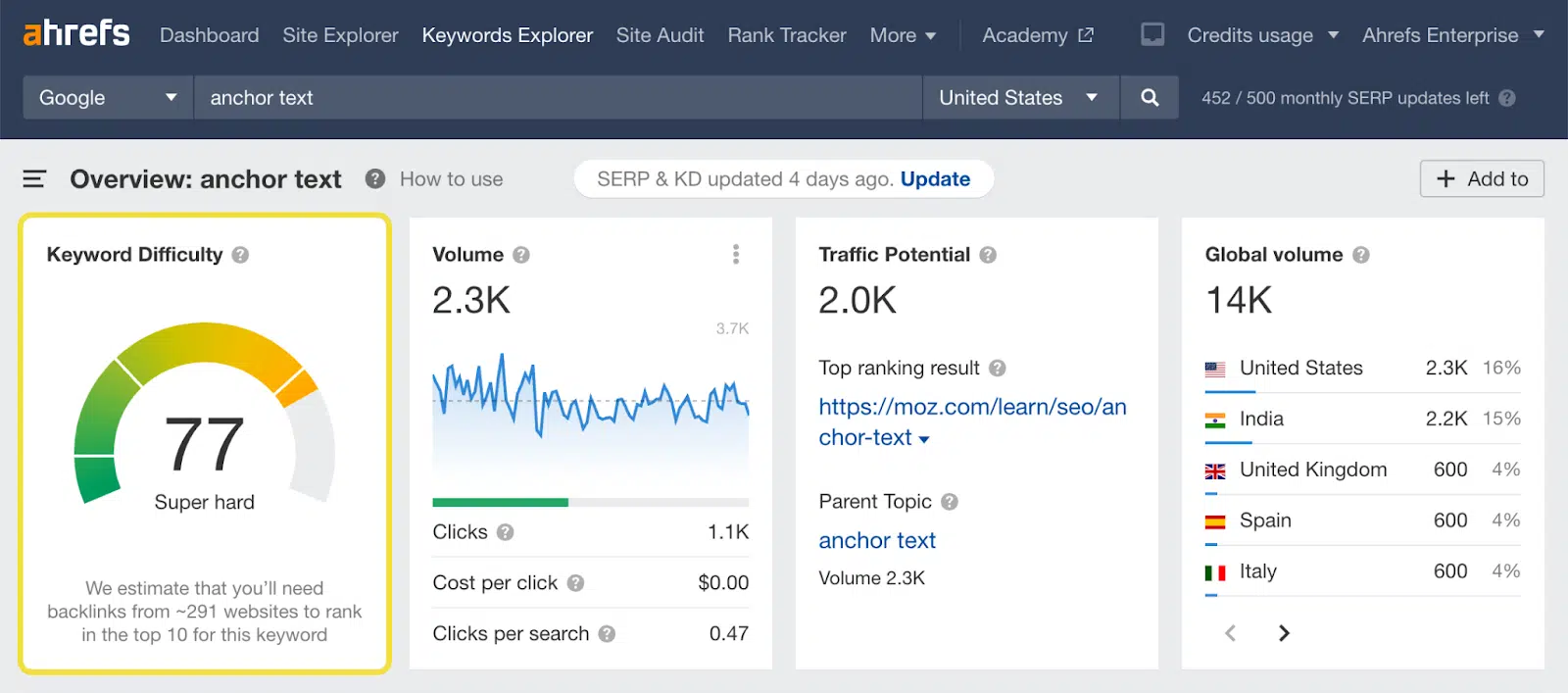Are you looking to create an engaging and successful digital marketing campaign? If so, you’ve come to the right place. This post will provide 8 steps to help you succeed in your digital marketing campaign. From understanding your target audience to optimizing content for SEO, these tips will set you up for success in launching a powerful digital presence. With the right strategy and execution plan, your business can gain more visibility online and increase sales conversions. So let’s get started!
Identify Your Target Audience
Before you launch your internet marketing plan, it’s important to establish who your target audience is and what they need from your business. Researching the demographics of your potential customers and understanding their interests, preferences, and behaviors can help you create content that resonates with them and drives engagement, creating a successful digital marketing campaign. Here are the top 3 ways that content creators target audiences and successful ways that we target audiences in our digital marketing services for small business.
Behavioral Targeting
Behavior targeting is a way to make sure you get the right people interested in what you have to offer. It means looking at what people like and do online so you can show them information about your business that they are likely to be interested in.
Geographical Targeting
Geographical targeting is a digital marketing strategy for online success that ensures the right people see your content based on their physical location. For example, if you are a local business with only stores in a certain city or state, you could use geographical targeting to ensure that only people living in or near those locations will be able to view and engage with your ad campaigns.
You can also target by language and cultural preferences. For instance, if you have an international company, you can show different ads depending on the language preferences of users in different countries. Additionally, marketers can target individuals based on specific zip codes for hyper-localized campaigns. This type of targeting allows businesses to deliver more targeted messages, increase conversions from their campaigns, and reduce spending on unqualified leads.
Demographic Targeting
Marketers can segment users and tailor messages that speak directly to their interests, life stages, or genders. By leveraging demographic information such as age, gender, education level, and experience, marketers can create content addressing specific groups which could improve conversions from campaigns. As a result, businesses will be able to better understand customer needs in order to hone messaging for maximum impact generating higher ROIs on ad spends.
Real Use Case Scenario: Imagine you run an e-commerce store that sells fitness equipment. By using behavioral targeting, you could identify users who frequently visit health and wellness websites or follow fitness influencers on social media. Geographical targeting could ensure that your ads are shown to people living in urban areas with a high density of gyms and fitness centers. Demographic targeting would allow you to tailor your messages to different age groups, such as creating specific campaigns for young adults interested in high-intensity training and older adults looking for low-impact exercise equipment.

Set Clear Goals And Objectives
The next step is to set goals and objectives for your Successful Digital Marketing Campaign. Ask yourself what you want to achieve with the campaign and how it will help you grow your business. This could include increasing website traffic, generating more leads, or building brand awareness in the market. Let’s dive into a few examples to help you define your objectives
Increasing Website Traffic
One of the main goals and objectives of a digital marketing strategy is to increase website traffic. This can be done through a variety of tactics, such as creating content that is optimized for search engine rankings, creating engaging social media posts, or even using pay-per-click (PPC) advertising.
Generating Leads
Another important goal and objective of a digital marketing methodology is to generate leads and grow your customer base. This can be achieved by creating content that resonates with your target audience and encourages them to take action. Content should focus on providing value to potential customers and feature calls-to-action (CTAs) that prompt them to sign up for newsletters or contact forms on your website.
Brand Awareness
An effective internet marketing strategy can also help build brand awareness in the market by positioning your business in front of the right people at the right time. This can involve optimizing content for organic search visibility, utilizing social media to reach out to potential customers, or leveraging influencers to spread awareness about your products or services.
Drive Conversions
The aim of any online marketing methoden should also be to drive conversions from website visitors or leads into paying customers. To do this effectively, businesses should create personalized user experiences with tailored content that speaks directly to their target audience’s needs and interests. Additionally, they should make sure their website pages are optimized for conversions with clear CTAs and offers that encourage people to take action.
Retaining Customers: Last but not least, one key goal of any online marketing plan is to retain existing customers by offering them engaging content and incentives that keep them coming back for more. Businesses should nurture their customer relationships through ongoing email campaigns, loyalty programs, or even offering exclusive discounts or promotions regularly in order to maintain customer loyalty over time.
Real Use Case Scenario: A software company aiming to launch a new product might set a goal to increase website traffic by 50% over six months through a combination of SEO and PPC campaigns. They might also aim to generate 200 new leads per month by offering free trials and demo webinars, while also increasing brand awareness through collaborations with industry influencers.
Develop A Content Strategy
Once you have identified your target audience and set your goals, it’s time to develop a content strategy that will help you reach those objectives. Consider which types of content (e.g., blog posts, videos, social media posts) will be most effective for engaging your customers. Also, think about the platforms where you will share this content and how often it should be updated. Mapping out these two steps places you ahead of most businesses in creating an organized and successful digital marketing campaign.
Use Emotional Language
Unlock the hearts and minds of your audience with powerful and emotionally-charged language that captivates, resonates, and leaves a lasting impact! Triggering emotions has been proven to lead to sales.
Speak Directly To Your Audience
Content should be crafted in a way that speaks directly to your target audience, taking into consideration their specific needs and interests. When you pinpoint their challenges and goals, it can help create more successful content experiences!
Make It Actionable
Captivate your audience with compelling CTAs crafted to inspire action, seamlessly guiding them through the thrilling journey you’ve strategically woven into your copy. Success is in the specifics – let them know what awaits at every turn!
Real Use Case Scenario: A travel agency could develop a content strategy that includes blog posts about top travel destinations, video tours of exotic locations, and social media posts featuring travel tips and customer testimonials. By using emotionally evocative language and speaking directly to travelers’ desires for adventure and relaxation, they can create a strong connection with their audience and drive engagement leading to a successful digital marketing campaign.

Optimize Your Content For SEO
Search engine optimization (SEO) is essential for improving visibility in search engines like Google and Bing. Optimizing your website with relevant keywords, optimizing images with alt text, and creating backlinks can help boost traffic to your site and improve rankings in search results pages.
See our SEO Services for Small Business page to learn about what we offer!
Use Relevant Keywords
When doing online marketing, it is important to use words that your customers might search for. This will help people find your website or product more easily. You can also use images with words that describe the image to help people find it.
Optimize Images With Alt Text
When doing online marketing planning, it is important to use words that describe the images you are using. These are called alt text. This helps people find your website or product more easily when they are searching online.
Create Backlinks
Backlinks are a way to help people find your website or product online. When you link to other websites, it can help people find you and your product more easily when they search on the internet.
Mind Your Business Newsletter
Business news shouldn’t put you to sleep. Each week, we deliver the stories you actually need to know—served with a fresh, lively twist that keeps you on your toes. Stay informed, stay relevant, and see how industry insights can propel your bottom line.
Subscribe to Mind Your Business
Real Use Case Scenario: A blog about eco-friendly living could optimize its content for SEO by incorporating keywords such as “sustainable living tips,” “eco-friendly products,” and “green lifestyle.” They could also add alt text to images showing eco-friendly products and create backlinks by guest posting on other sustainability blogs.
Design An Engaging Landing Page
A landing page is a powerful tool for converting website visitors into leads and customers. Ensure that your landing page has an eye-catching design and relevant content, such as customer testimonials or product images. Also include a strong call to action (CTA) that encourages visitors to take the desired action (e.g., purchase a product, download an e-book).
Eye-Catching Design
An eye-catching design for a landing page could include bright, vibrant colors; interesting visuals such as images or videos; and clear, concise text that is easy to read. For example, the landing page could feature an image of the product or service that is being offered at the top of the page, along with colorful buttons that lead to further information. The body text should be written in a way that engages readers and conveys the benefits of using the product or service. Additionally, including customer testimonials can help build trust in potential customers and encourage them to take action.
Relevant Content
Relevant content on a landing page includes customer testimonials, product images, and descriptions that provide helpful information about the product or service being offered. This can include features, benefits, pricing details, customer feedback, and comparisons to similar products or services.
Quality images and videos can help customers better understand what they are getting out of the offer and create excitement around taking action. Animations can also be used to draw attention to certain elements on the page and make it easier for visitors to take notice and follow through with a purchase.
A Strong Call To Action (CTA)
A strong call to action should be centered around a compelling message that encourages the viewer to take action. It should be clear, concise, and appeal to the customer’s needs by providing an incentive or promise of an outcome. For example, a CTA could read: “Download Now and Get 15% Off!” with a button linking to the download page. Additionally, the CTA should be easily visible and in a prominent position on the landing page. With a little research, experimentation, and creative thinking you can create high-quality content that will help your business thrive!
Real Use Case Scenario: An online course provider could design an engaging landing page with vibrant images of students, a video testimonial from a successful graduate, and a clear CTA such as “Enroll Now and Save 20%!” This approach can help potential students visualize the benefits and encourage them to take immediate action.

Utilize Social Media Platforms
Social media platforms are great tools for building relationships with customers and promoting your business. Choose which social media sites you want to be active on—Facebook, Instagram, LinkedIn, Twitter, etc.—and create engaging content for each one. Pay attention to engagement metrics so you can track the success of your campaigns
Build Relationships With Customers
Utilizing social media to build relationships with customers and potential leads is key for internet marketing success. Use platforms like Facebook, Twitter, Instagram, and LinkedIn to engage in conversations with customers, answer their questions, and create content that will be useful to them.
Create Engaging Content
Creating quality content that resonates with your target audience is essential for effective online marketing strategy on social media platforms. Think of ways you can use visuals—like photos or videos—to tell stories about your brand while also conveying important messages about your products or services.
Monitor Engagement Metrics
When utilizing social media platforms for a successful digital marketing campaign, it’s important to measure the results of your efforts by tracking engagement metrics such as likes, shares, comments, etc. This data can help inform future strategies so you know what tactics are working best for reaching your goals.
Real Use Case Scenario: A local bakery could use Instagram to showcase their daily specials, share behind-the-scenes videos of the baking process, and engage with customers through comments and direct messages. By monitoring engagement metrics, they can identify which types of posts resonate most with their audience and adjust their strategy accordingly.
Track Results And Analyze Data
Tracking metrics like website traffic, leads generated, social media engagement, and conversions will help you understand how successful your digital marketing campaign is. Analyzing this data will provide insights into what’s working (or not working) so you can adjust your strategy accordingly.
Analyze Website Traffic
Analyzing website traffic means looking at how many people visit your website. You can also check what pages they look at and how long they stay on the page. This will help you understand if people like your website and what kind of content they are interested in. The best way to do this is through your Google Analytics account.
Measure Leads Generated
Measuring generated leads from online marketing activities can be done in a number of ways. One way is to use a tracking link in your email or website landing page that links to the final conversion page. This tracking link can be used to measure how many people clicked on the link and then converted into customers.
Another way to measure leads generated is to use UTM codes, which are snippets of code that are added to the end of URLs used in campaigns. These codes can track how many visits a campaign has received, as well as what actions visitors have taken on the website. Additionally, lead capture forms can be used to capture contact information for leads who may not have made an immediate purchase but could become customers later on. Finally, A/B testing with different versions of content can help marketers determine which type of content works best for generating leads and conversions.
Analyze Conversions
One way to track conversions from digital marketing process is to use UTM codes. UTM codes are snippets of code that are added to the end of URLs used in campaigns, allowing marketers to measure the number of visits a campaign has received and which actions visitors have taken on the website. Additionally, A/B testing with different versions of content can be used to determine which type of content works best for generating leads and conversions. For example, if one version of an email has a higher conversion rate than another, marketers can use that data to inform future campaigns.
Another way to track conversions from online marketing techniques is through lead capture forms. Lead capture forms allow marketers to collect contact information from potential customers who may not be ready to commit right away but could become customers later on. Marketers can also use tracking pixels or analytics software like Google Analytics to monitor user activity on their websites and measure how many people are taking certain desired actions such as signing up for a newsletter or making a purchase. This data can be used to understand customer behavior and help marketers optimize their digital marketing efforts in the future.
Real Use Case Scenario: An e-commerce site selling organic skincare products could use Google Analytics to track which blog posts are driving the most traffic and conversions. They might discover that posts about natural ingredients perform best, leading them to create more content on that topic and adjust their product descriptions to highlight these ingredients.
Monitor Your Campaigns
Finally, it’s important to monitor your campaigns regularly to ensure they are running smoothly and yielding the desired results. Keep an eye on any changes in market trends or customer behaviors that could affect the success of your campaign and make adjustments to keep up with the competition.
Real Use Case Scenario: A fashion retailer could monitor their seasonal sales campaigns and notice a spike in interest for a particular product category. By adjusting their marketing efforts to focus more on this category, they can capitalize on the trend and maximize sales.
Conclusion
Launching a successful digital marketing campaign requires careful planning and execution. To maximize your success, it’s important to identify your target audience, set goals and objectives for the campaign, develop an effective content strategy that is optimized for search engines, design an engaging landing page with a strong call-to-action, utilize social media platforms to build relationships with customers and promote your business, track results regularly to measure progress against objectives and analyze data from campaigns to make adjustments as needed. With these tips, you can create a powerful digital presence that drives more sales conversions!
This comprehensive guide will help you navigate the process of developing and executing strategies and tactics to ensure the success of your online marketing plans. Following these steps can improve your online marketing strategy, achieve your business goals, and ensure your online marketing success.







